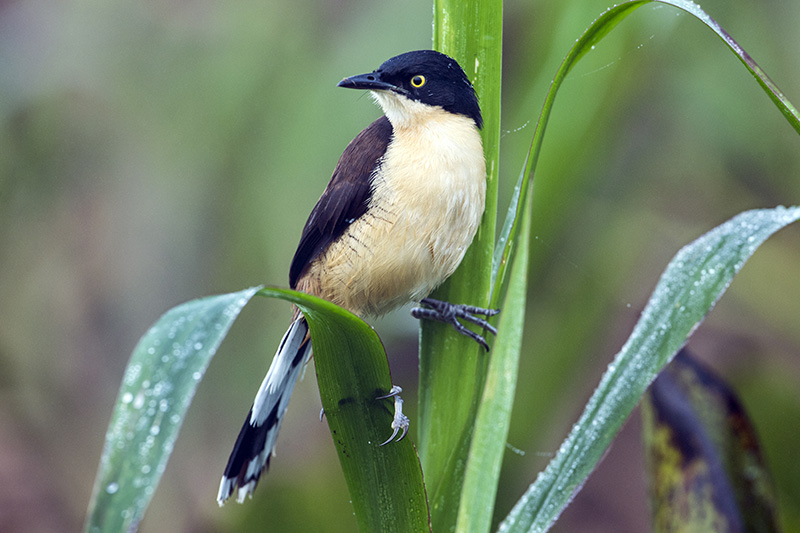Only one species within this family spread in most South America. Closely related to the wrens. Often seen in the morning and rarely in midday. Black head with bright yellow eyes. Bill is blackish and slightly down curved. Legs and feet are black. Vocal and noisy more often heard than seen. Found in humid forest with elevations lower than 1,500 m down to sea level. Feeds on invertebrates. Gleans from leave surface in grass and catches insects in the air. Probes and plugs insects in marshes. Mates stay together all their lives. Adult offspring will remain with their parents and help raise siblings from subsequent nesting periods in an unusual system called cooperative breeding. Territorial birds defending nests also include helper birds.
Solo una especie en esta familia dispersa en Sur América. Muy relacionado con el cucarachero. Se observan en la mañana pero no al medio dia. Poseen cabeza negra con ojos brillantes de color amarillo. Pico negruzco y curvo hacia abajo. Piernas y patas negras. Es un ave ruidosa y díficil de ver. Habitan en zonas húmedas desde el nivel del mar hasta los 1500 m de altura. Consumen gusanos y otros animales pequeños. Vuelan entre las superficies de hojas para atrapar insectos. También pueden atrapar insectos en el aire. La prole de estas aves ayudan a sus madres a cuidar los recién nacidos. Este inusual sistema se llama crianza cooperativa. Las aves ‘ayudantes’ también participan en ahuyentar intrusos.
Donacobius
Cucarachero de Laguna
ORDER: PASSERIFORMES
FAMILY: Donacobidae



